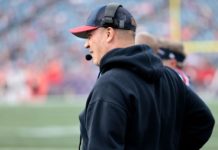My patient was brought to the emergency room by his friend because he could no longer catch his breath and had a cough that wouldn’t extinguish. He lived with three other young men, all in their early 20s, in a small house located in what many of us considered the no-man’s land between Cleveland and Buffalo, the four of them suspended between spending some time in a community college and finding work that they might one day call a career.
Findings on a chest X-ray prompted a CT scan, which showed a “huge mass lesion,” in the words of the usually nonplused radiologist, measuring 18 centimeters by 15 centimeters in the front of his chest, beneath the breastplate. The mnemonic for what this anterior mediastinal tumor could represent was “The Four T’s”: abnormalities of the Thymus, Thyroid, a Teratoma (a type of germ cell tumor containing several different types of tissue, even sometimes hair and muscle), or a Terrible lymphoma.
A subsequent biopsy confirmed the terrible lymphoma, and he was admitted to my hospital service for treatment.
The nurses and social worker who had met him were concerned. “He drinks 15 cans of beer a week that he’ll admit to, and has blacked out in the past,” I was told. I had noticed a previous visit to the E.R. for trauma related to a binge-drinking episode. I asked about his family.
His social worker, who has borne witness to extremes of challenging environmental situations in her many years of caring for cancer patients, looked grim. “His father’s in jail. His mother is addicted to drugs and in the past has stolen his money and medications. His sister is developmentally delayed. He doesn’t have any caregivers and has been living independently for years.” She paused, giving me space to absorb this. “It’s going to be tricky for him to get through all of his therapy.”
Adolescents and young adults, which in medicine we define as ages 15 to 39, are a special population of patients with respect to the types of cancers they commonly get and the biology of those cancers. They also have distinct concerns from older or younger cancer patients, including unique issues surrounding their emerging identities, body image and autonomy. They are caught in the no-man’s land between being treated by adult oncologists, who may not be sensitive to these concerns, or by pediatric oncologists, where they may feel out of place sitting in an infusion chair receiving treatment next to a child.
I walked into my patient’s room, where he lay in his hospital bed, looking almost too fragile to be able to handle this huge mass lesion, never mind the chemotherapy I was about to propose. Slight, at five-and-a-half feet and 125 pounds, his face appeared even smaller, with a thick, black beard, oxygen tubing beneath his nose, and a snapback trucker baseball cap over his head. Tattoos covered both of his arms — a style element that my teenage children tell me is now considered normative. Another young man sat in the chair by his bed.
I discussed his diagnosis and its treatment. “The first course of chemotherapy we’ll give you in the hospital. After that, over the next few months, we’ll provide most of your care as an outpatient, meaning you’ll need to come back and forth to clinic a bunch of times.” I paused, giving him space to absorb this. “Is that something you can do?”
He nodded and gestured with his thumb toward his buddy, sitting in the chair beside him. “These guys will help me out.” He sounded confident.
But I must have looked unconvinced, because his friend stepped in to reassure me, “We’ve got this. Whatever he needs.”
I still had many doubts.
Over the next four weeks, we treated his terrible lymphoma in the hospital. Another CT scan showed that his huge mass lesion had gotten smaller. When he recovered from the side effects of chemotherapy, we held our breath and discharged him home, with a follow-up appointment to see me in clinic and instructions to lay off the drinking.
He showed up a few days later to my office for his first outpatient appointment, early even, with another buddy by his side. He was grinning ear-to-ear, having defied my expectations.
Same with the next appointment. And the one after that.
And every appointment with me for the following year and a half. I got to know all of his housemates, and some of their girlfriends, too. They brought him to the hospital or clinic for his chemotherapy, to the E.R. when he got sick, and asked questions about his health, on his behalf. One even inquired if he could have one alcoholic drink on his birthday — the only one he has imbibed since I’ve known him.
He’s become one of my heroes, a role model patient who is totally compliant with his health care appointments. And while there were real warning signs that his treatment might not have gone as smoothly as it did, I was guilty of discounting his commitment to it because of his age, appearance and background.
Fortunately, I haven’t gotten too old to learn from him and his buddies.
Dr. Mikkael Sekeres (@MikkaelSekeres) is director of the leukemia program at the Cleveland Clinic and author of the forthcoming book “When Blood Breaks Down: Lessons From Leukemia.”
Source : Nytimes













